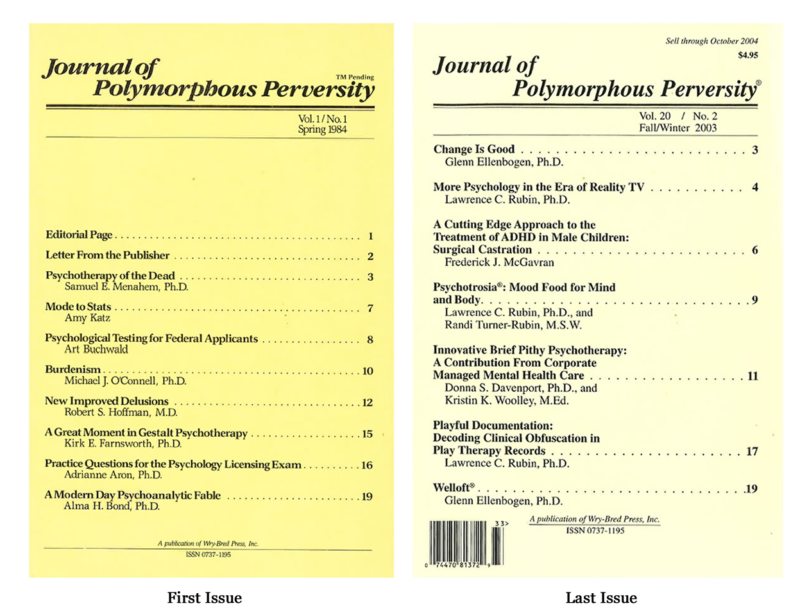The Journal of Polymorphous Perversity® (JPP) was published twice per year for 20 years (and was available by subscription and by single copy sale in bookstores), so a total of 40 issues were published. The first article of the first issue was “Psychotherapy of the Dead,” and the last article of the last issue was “Welloft.” The articles were authored by psychologists, psychiatrists, social workers, neurologists, generic human beings, and graduate students (note that, once again, graduate students are lowest on the totem pole). Glenn Ellenbogen – the founder, Publisher, and Editor-in-Chief of JPP – authored about 10% of the articles, either under his own name or under two pseudonyms: Ernst von Krankman (meaning, in German, basically “seriously from a sick person”) and William Goodenough (reflecting Dr. Ellenbogen’s modest self-perception that his writing was, well, good enough). Some of the pieces were written by some very, very famous people in the field of Psychology, but those people chose to write under pseudonyms because they valued their reputations and wanted continued employment. How heavy a hand did Dr. Ellenbogen have in editing the manuscripts before they were typeset and saw the light of day? Typically, very heavy. JPP’s format, namely, the Table of Contents printed on a drab buff-colored front cover, was meant to mimic the look of real scientific journals so that the unsuspecting reader first picking up the magazine would seriously question, “Is THIS for REAL?!” Four anthologies of JPP articles were published in book form, and later several Kindle editions were produced. JPP was published by Wry-Bred Press, Inc. in Manhattan throughout its 20 years. The name Journal of Polymorphous Perversity® is a Registered Trademark. Articles appearing in the Journal of Polymorphous Perversity® have been formally registered in the U.S. Copyright Office.

